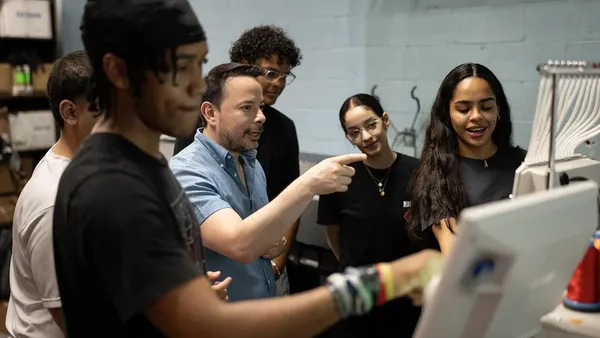Dive Brief:
- As secondary schools begin moving to a competency- or mastery-based education model, traditional grade levels may become less relevant, Felice Hybert, the assistant superintendent for curriculum and instruction for the Kankakee (IL) School District, writes for EdSurge.
- As one of 10 districts in Illinois to implement a competency-based approach — which Hybert describes as a marriage between “traditional, content-driven coursework” and “performance-based assessment” — students are using project-based learning to integrate knowledge from several subject areas to complete a project or task.
- The district is now thinking of students as being at year one, two or three, for example. And a student who masters a particular content area can move to year two in that area even if he or she is still a freshman, Hybert writes.
Dive Insight:
In a Q&A with The Atlantic two years ago, Michael Horn, founder of the Clayton Christensen Institute, described a model in which blended- and project-based learning keeps students from being “prisoners to the progress” of their peers, while remaining grouped with their age-level peers for important social reasons. At the same time, however, there might also be appropriate times when mixed-age grouping makes more sense and older students can benefit by teaching a concept to a younger student, he wrote.
Schools in the Adams County School District 50, outside of Denver, began eliminating grade levels in 2009 and allow students to move to the next level in a content area when they are ready. But in a 2015 article, district leaders said one implementation challenge is that state regulations still require students to be tracked by grade level for funding and standardized testing purposes.
Another recent Atlantic article focuses on a Massachusetts charter school’s experiences with reorganizing 7th through 12th grade into three multiage groups. Students stay, for example, in a math class for two years, which can improve the chances that struggling students will master the material. But teachers also have to make sure they challenge those who are in the second year of the class.













